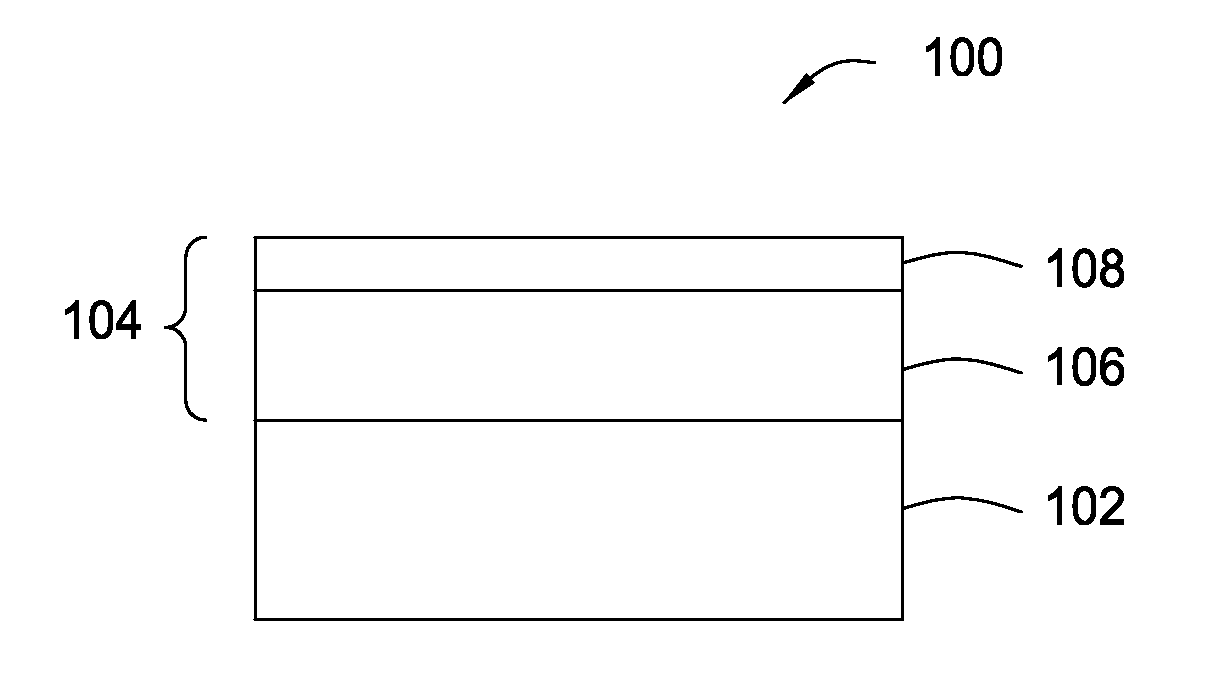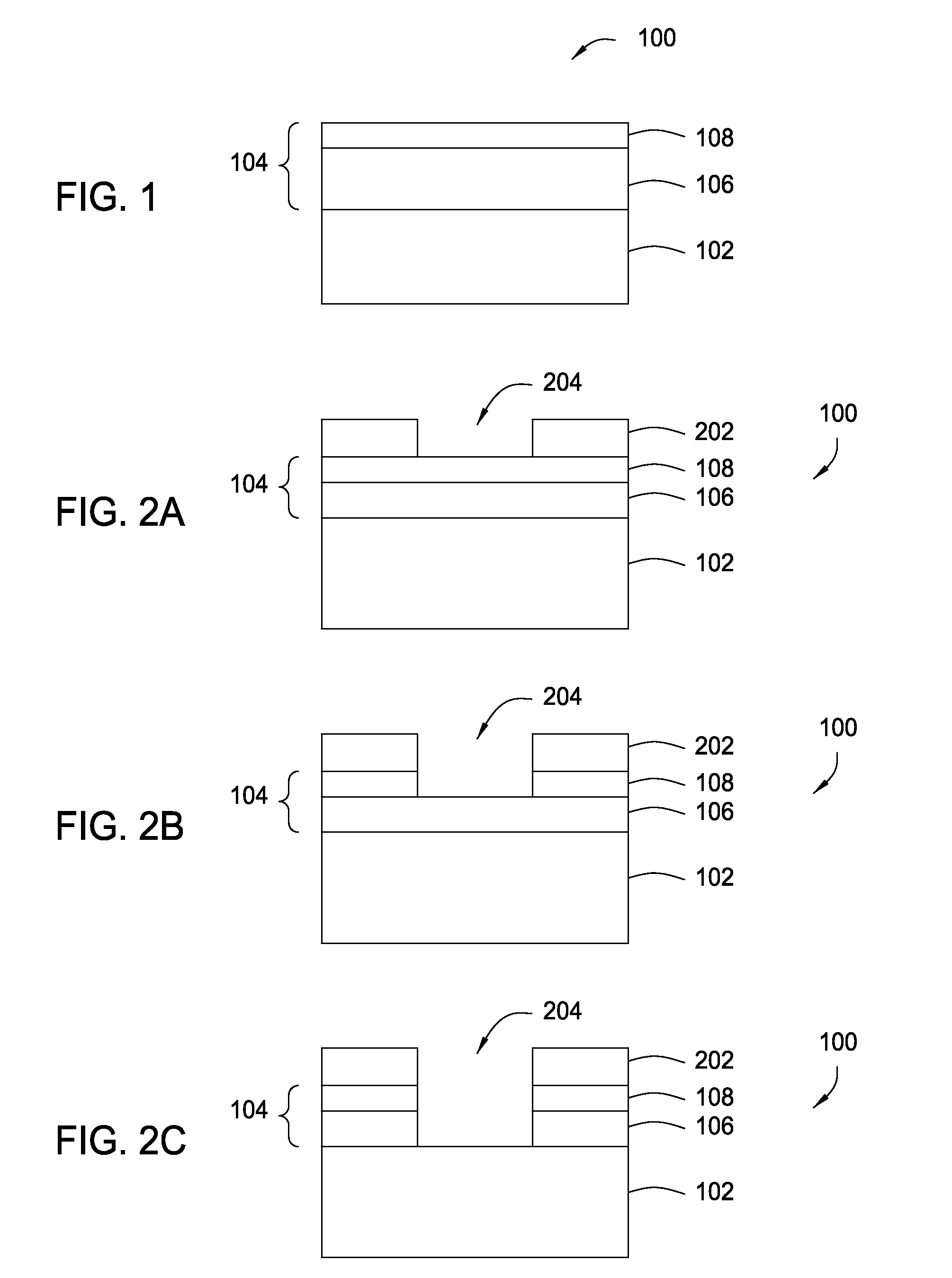Photomask having self-masking layer and methods of etching same
a self-masking layer and photomask technology, applied in the field of photomasks, can solve the problems of affecting performance, affecting the etch rate, and the technological limit of present optical lithography techniques, and achieve the effect of low etch ra
- Summary
- Abstract
- Description
- Claims
- Application Information
AI Technical Summary
Benefits of technology
Problems solved by technology
Method used
Image
Examples
Embodiment Construction
[0017]The present invention provides a photomask structure and method of etching that can be used for optical binary photomask, embedded attenuated phase shift mask (EAPSM), and alternate aperture phase shift mask (AAPSM) applications to reduce the etch CD bias and improve pattern transfer fidelity as compared to conventional masks.
[0018]FIG. 1 depicts one embodiment of a blank photomask, or mask, 100 of the present invention. As depicted in FIG. 1, the mask 100 includes an optically transparent substrate 102 having a multi-layer absorber layer 104. The substrate 102 may typically comprise an optically transparent silicon based material, such as quartz (e.g., silicon dioxide, SiO2), and the like. The substrate 102 may be any size suitable for use as a photomask. In one embodiment, the substrate 102 has a rectangular shape having sides between about 5-9 inches in length. The substrate 102 may be about 0.15-0.25 inches thick. In one embodiment, the substrate 102 is about 0.25 inches t...
PUM
| Property | Measurement | Unit |
|---|---|---|
| thickness | aaaaa | aaaaa |
| length | aaaaa | aaaaa |
| thick | aaaaa | aaaaa |
Abstract
Description
Claims
Application Information
 Login to View More
Login to View More - R&D Engineer
- R&D Manager
- IP Professional
- Industry Leading Data Capabilities
- Powerful AI technology
- Patent DNA Extraction
Browse by: Latest US Patents, China's latest patents, Technical Efficacy Thesaurus, Application Domain, Technology Topic, Popular Technical Reports.
© 2024 PatSnap. All rights reserved.Legal|Privacy policy|Modern Slavery Act Transparency Statement|Sitemap|About US| Contact US: help@patsnap.com










